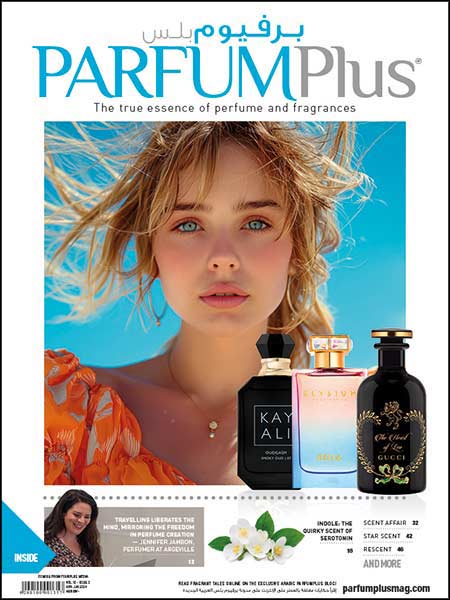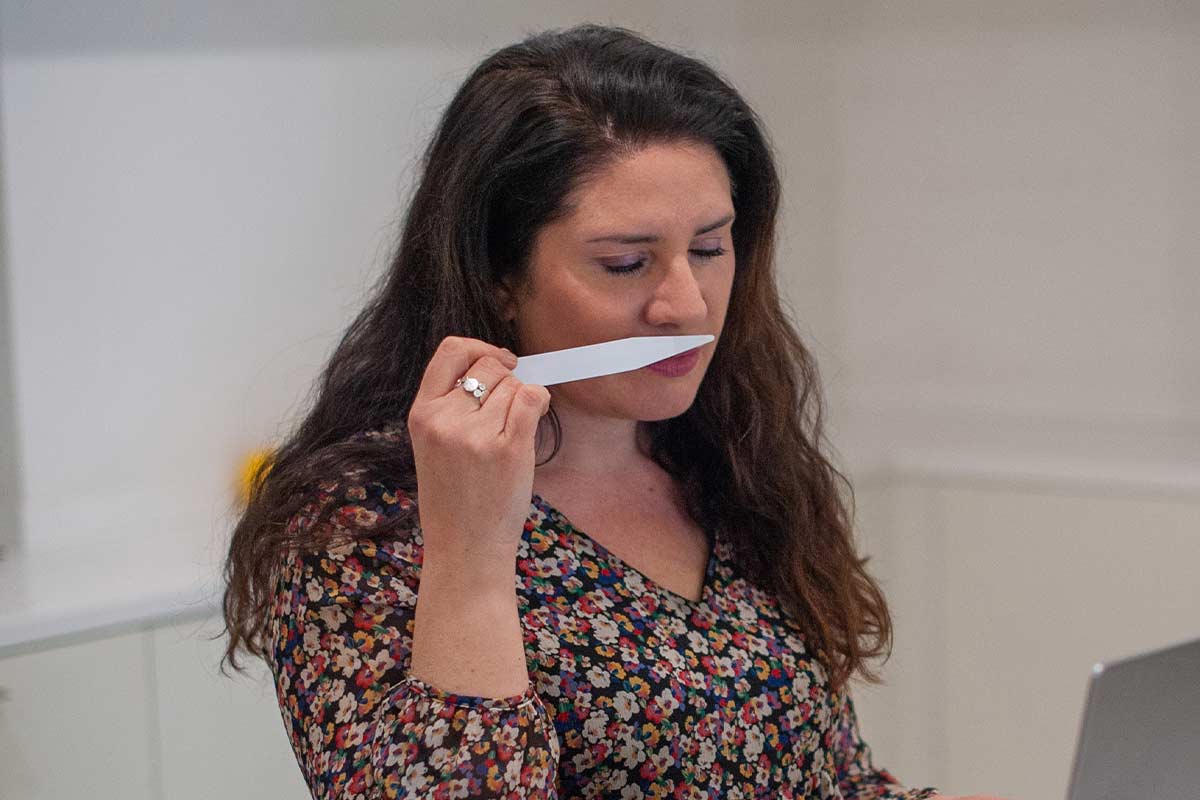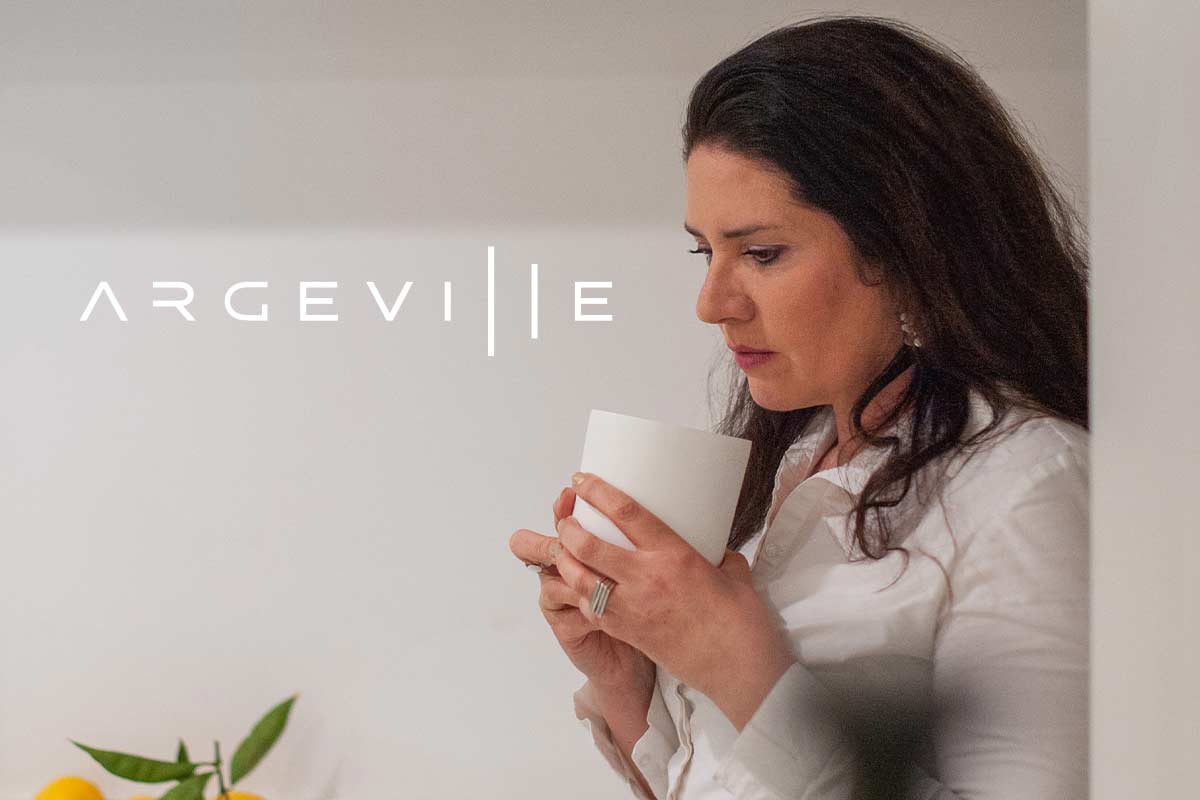
"Travelling Liberates The Mind, Mirroring The Freedom In Perfume Creation"
Renowned perfumer from Argeville, Jennifer Jambon explores cultural and social influence on fragrance creation
In this exclusive interview, discover how Jennifer Jambon's global journey shapes her perfumes, blending cultural influences with botanical inspirations in fragrance creation
ParfumPlus : Childhood memories often play a significant role in shaping one's olfactory preferences. How do your early experiences with herbs and plants during childhood influence your work as a perfumer today?
Jennifer Jambon : In my childhood, exploring the garden and learning about gardening and nature brought me immense joy. I was delighted in uncovering the various scents of flowers, aromatic plants, and herbs, often blending them together to craft imaginary perfumes. Even now, nature remains a profound wellspring of
inspiration for me.
When I compose fragrances, I gravitate towards incorporating green notes, natural florals, and aromatic essences. I have a strong affinity for creating 100% natural (cosmos) fragrances. This presents a distinctive challenge due to the smaller palette, yet I believe it fosters immense creativity.
PP : Your journey from France to various countries and finally settling in England is fascinating. How have these different cultural landscapes shaped your understanding of scent and your creations?
JJ : Travelling broadens horizons, introducing us to diverse scents in plants, cuisine, and landscapes. Patagonia's glacier hike inspired a fragrance reflecting vastness and rugged beauty, blending cold notes like frankincense and juniper berries with vetiver, ambergris, and musk. Peruvian cuisine, rich in spices and herbs, fuels creative ideas. Travelling liberates the mind, mirroring the freedom in perfume creation. Crafting from scratch, and experimenting with unexpected ingredients, is deeply fulfilling.
PP : Your favourite odours include Sandalwood, Iris, Tonka bean, Magnolia, and Ambroxan. Could you get into how these specific scents resonate with you personally, and how you incorporate them into your creations?
JJ : Exploring the Quintis Sandalwood plantation in Australia during harvest season was an unforgettable experience, especially after winning the Reimagining Sandalwood competition. Sandalwood holds a special allure for me, with its complex blend of creamy, woody, and subtly dry nuances, reminiscent of sawdust with hints of vanilla and spice.
Among my cherished ingredients, iris holds a paramount position for its ability to elevate fragrances with volume and refinement, adding a powdery elegance. I often blend it with green violet leaves, tonka bean, and sandalwood, the latter contributing a gourmand smoothness that bridges oriental and comforting notes.
Magnolia, with its fleeting yet captivating blooms, lends a delightful complexity to my creations. Its soft floral and fruity facets create a seamless transition between top and middle notes, enhancing harmony.
Ambroxan, with its refined and versatile nature, adds depth and sophistication to my perfumes, offering a clean yet enduring presence as a base note. Its inclusion provides a comforting reassurance, completing the olfactory journey.

PP : You have won a few prestigious awards from the French Society of Perfumers and the American Society of Perfumers. How do you think your global experiences and exposure to diverse cultures contributed to your success?
JJ : Winning prestigious awards like the French Society of Perfumers' accolade in 2008 for "Promenade" and clinching the Reimagined Sandalwood Competition in 2016 and 2022 by the American Society of Perfumers have been pivotal moments in my career. These victories not only bolstered my confidence in my craft but also paved the way for international job opportunities.
"Promenade," inspired by a poetic journey through a lush forest after rain, is a testament to my creativity. Its notes of damp greens, iris, and amber evoke the serene beauty of nature. Displayed proudly at the Osmotheque in Versailles, it stands as a symbol of my passion and dedication.
In the Sandalwood Competitions, my focus on sustainable sandalwood from Quintis in Australia yielded fragrances that celebrated the creamy warmth of sandalwood. With touches of orris, magnolia, and benzoin, I aimed to capture its essence while embracing sustainability with ozonic elements.
These experiences, coupled with global travels and diverse collaborations, have enriched my olfactory journey. They've taught me to embrace diversity, curiosity, and open-mindedness, essential traits in the world of perfumery.

PP : Given the cultural diversity of the UAE, how would you develop a fragrance for Dubai that appeals to both Middle Eastern locals and international expats?
JJ : To appeal to both Middle Eastern locals and international expats I pay attention to the olfactory combinations I use. For example, I incorporate a trendy fruity note along with some oud, woody, and spicy notes that are more typical of Middle Eastern perfumes. I ensure that the fruity top note is well balanced and blends smoothly with the rose, saffron, pepper, rich woody accord, and leathery base. Longevity and projection are crucial to making a fragrance successful, as well as originality.
PP : Lastly, what role do social trends play in shaping perfume designs, and how do you ensure your creations remain relevant and appealing in this evolving social terrain?
JJ : Social trends play a significant role in fragrance creation, with many factors to consider. Depending on the country you're developing a fragrance for, you must adapt to local tastes and the main ingredients used in the fragrance, as well as any potential claims.
The growing demand for wellness and natural ingredients is driving a shift towards perfumes that are more natural-based and feature lighter fragrances. Fragrances are used to indulge oneself, to feel good, clean, and reassured, while in other cultures, they serve mainly to attract attention, showcase personality and values, and express oneself as a fashion accessory. New ingredients offer an endless wellspring of creativity, enabling the creation of new effects, and textures, and leading to original trends.






